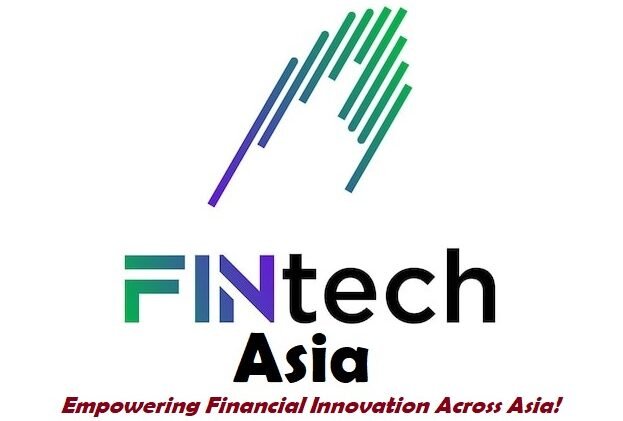Ftasiaeconomy Technology Updates
The technological landscape across Asia is evolving at a remarkable pace, with innovations spanning artificial intelligence (AI), blockchain, fintech, and 5G driving economic growth and transformation. FTAsiaEconomy has been at the forefront of covering these rapid developments, providing critical insights into how technology is reshaping industries, societies, and economies. This article delves into the latest technological news impacting the region, focusing on the key trends, challenges, and the future outlook.
1. AI and Machine Learning: Asia’s Growing Tech Powerhouse
Artificial intelligence (AI) and machine learning (ML) have become major growth engines in Asia, transforming industries such as manufacturing, healthcare, finance, and retail. Countries like China, Japan, and South Korea are leading in AI research and development, with companies and governments investing heavily in these technologies.
- China’s AI Dominance: China continues to dominate the AI space, with companies like Baidu, Tencent, and Alibaba leveraging AI to create smarter digital ecosystems. The Chinese government’s AI strategy aims to become the world leader in AI by 2030, emphasizing AI’s potential in areas such as autonomous vehicles, healthcare diagnostics, and smart cities.
- Japan’s AI in Robotics and Automation: Japan has been a pioneer in robotics and AI, especially in the automotive and manufacturing sectors. Companies like SoftBank and Toyota are incorporating AI into their operations to improve production efficiency and create advanced robots that support elderly care and industrial processes.
- South Korea’s AI Startups: South Korea has emerged as a hub for AI innovation, with startups focusing on diverse applications, including AI-driven cybersecurity, natural language processing, and AI-enhanced education.
2. Blockchain and Cryptocurrency: Asia Leading the Digital Finance Revolution
Asia has become a major player in blockchain technology and cryptocurrency, with the region accounting for a significant portion of global crypto trading volumes. Countries such as Singapore, South Korea, and Japan are at the forefront of adopting and regulating blockchain-based solutions.
- Singapore’s Blockchain Adoption: As one of the most blockchain-friendly countries in the world, Singapore is fostering blockchain startups and projects. The Monetary Authority of Singapore (MAS) has introduced clear regulations to create a safe environment for blockchain innovations, encouraging their integration into banking, healthcare, and supply chain management.
- South Korea’s Crypto Regulations: South Korea has developed one of the most comprehensive regulatory frameworks for cryptocurrencies. With crypto exchanges like Upbit and Bithumb dominating the global market, South Korea is also investing in decentralized finance (DeFi) projects, blockchain voting systems, and smart contracts.
- Japan’s Crypto-Friendly Policies: Japan was among the first countries to recognize Bitcoin as legal tender. The country’s Financial Services Agency (FSA) has set up a regulatory framework to foster innovation while ensuring consumer protection in the crypto space.
3. 5G Revolution: Asia at the Forefront of Global Connectivity
Asia has emerged as a leader in 5G technology, with countries such as China, South Korea, and Japan rolling out comprehensive 5G networks. This new generation of connectivity is set to revolutionize everything from communication to the Internet of Things (IoT), enabling faster and more efficient data transfer.
- China’s 5G Leadership: China is a global leader in 5G deployment, with companies like Huawei and ZTE leading the charge. The Chinese government is investing heavily in 5G infrastructure, aiming to dominate the global 5G market by 2025. This technology is being applied in various sectors, including smart cities, autonomous driving, and telemedicine.
- South Korea’s 5G Applications: South Korea was one of the first countries to launch nationwide 5G services. Major telecom players like SK Telecom, KT Corporation, and LG Uplus are developing 5G applications in entertainment (virtual reality), gaming, healthcare, and industrial automation.
- Japan’s 5G Innovations: Japan has made significant strides in 5G, focusing on enhancing its capabilities for the 2021 Tokyo Olympics and beyond. Companies like NTT Docomo and SoftBank are working to integrate 5G into manufacturing, logistics, and smart transportation systems.
4. Fintech Growth in Asia: A New Era of Digital Finance
The fintech sector in Asia is experiencing explosive growth, driven by advancements in digital banking, mobile payments, and financial services innovation. Fintech companies in countries like China, India, and Singapore are transforming the way individuals and businesses access financial services.
- China’s Fintech Giants: Companies like Ant Group (Alipay) and Tencent (WeChat Pay) dominate China’s fintech scene, offering a wide range of digital financial services, including mobile payments, digital wallets, and online lending. China’s regulatory landscape is evolving to balance fintech growth with financial stability.
- India’s Fintech Revolution: India has become a global leader in fintech innovation, with companies like Paytm, PhonePe, and Razorpay driving the adoption of digital payments. The Indian government’s push for a cashless economy and the rapid growth of mobile internet have spurred this fintech boom.
- Singapore’s Fintech Ecosystem: Singapore is building a robust fintech ecosystem, with the government encouraging innovation in digital banking, insurtech, and robo-advisors. The city-state’s fintech regulatory sandbox is fostering collaboration between startups, established financial institutions, and regulators.
5. Smart Cities and IoT: Shaping Asia’s Future
The development of smart cities and IoT solutions is accelerating in Asia, with countries like Singapore, China, and South Korea investing in technology to create sustainable, efficient, and data-driven urban environments.
- China’s Smart City Initiatives: China has ambitious plans to create hundreds of smart cities, utilizing AI, big data, and IoT to improve transportation, energy management, and public services. Cities like Shenzhen and Hangzhou are already benefiting from smart city technologies that enhance residents’ quality of life.
- Singapore’s Smart Nation Vision: Singapore’s “Smart Nation” initiative aims to harness technology to improve government services, healthcare, and urban mobility. The city-state is investing in IoT-enabled infrastructure and platforms to collect and analyze data for better decision-making.
- South Korea’s IoT Innovations: South Korea is leveraging IoT in its smart cities, with Seoul being a prime example of how IoT is being used to optimize traffic management, waste disposal, and public safety. The country’s government has also invested in IoT research and development to drive future innovation.
6. Challenges and Opportunities in Asia’s Technological Landscape
While Asia is a technological powerhouse, there are challenges that come with rapid innovation. Data privacy concerns, cybersecurity threats, and regulatory hurdles pose significant risks to businesses and consumers alike. Governments across the region are grappling with the need to balance innovation with regulation.
- Cybersecurity Threats: With increased digitalization comes the risk of cyberattacks. Asia has seen a rise in cybercrime, with businesses and governments needing to strengthen their cybersecurity infrastructure to protect sensitive data and maintain public trust.
- Regulatory Landscape: Technology regulation in Asia varies by country, with some governments adopting a more proactive approach, while others lag behind. Striking the right balance between fostering innovation and ensuring consumer protection is a challenge that regulators must address.
7. The Future of Technology in Asia: What’s Next?
Asia’s technological future looks promising, with continued investments in AI, blockchain, 5G, and fintech expected to drive growth. As the region positions itself as a global leader in technological innovation, we can anticipate more advancements in areas such as quantum computing, biotech, and green technology.
Countries across Asia are collaborating to create a more interconnected technological ecosystem, leveraging the strengths of each nation to build a future that is driven by innovation and sustainability.
Conclusion
FTAsiaEconomy’s technological news provides a glimpse into the rapidly changing tech landscape across Asia. From AI and 5G to blockchain and fintech, the region is at the forefront of global technological advancements. As Asia continues to lead in technological innovation, the world will be watching closely, eager to see how these developments will shape the global economy and society in the years to come.



